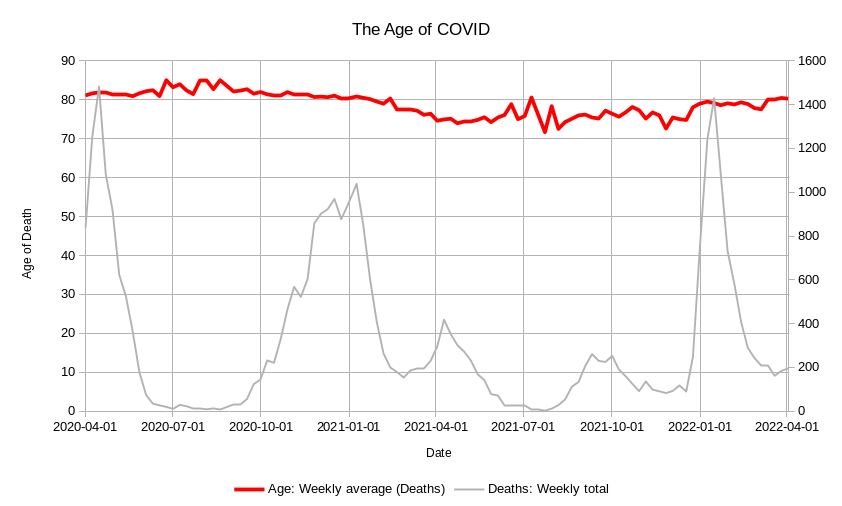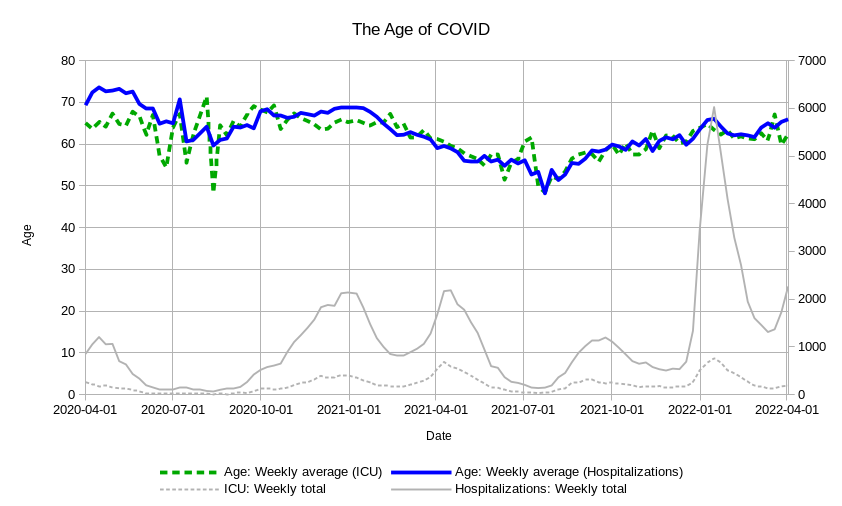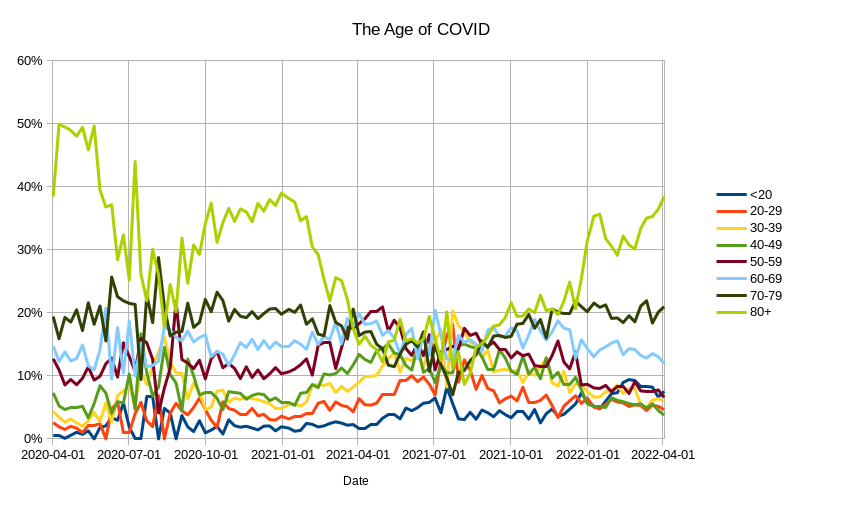Canada’s COVID-19 vaccination program started in December, 2020, picking up in earnest by March, 2021. The program focused on the oldest population first, with over 90% of people over 70 years old at least partially vaccinated by the end of May, 2021. However, as variants became increasingly common, the media reported that cases were shifting to younger age groups since March, 2021. The media coverage seemed to imply that this was the result of new variants targeting younger patients, while an alternative explanation is that the vaccine roll-out prioritized older patients.
How can these competing hypotheses be arbitrated? I previously demonstrated the decline in the average Age of COVID across several key metrics by May, 2021. But the hypotheses in question make different predictions about what happens next: If the shift to younger patients is primarily driven by new variants, then the decline in the average age of COVID should persist. On the other hand, if the vaccine roll-out is the main cause, then I predict that this decline would soon plateau, and rise back up to its original level. Why?
While the older population was prioritized, Canada was the first country in the world to approve vaccinations for children as young as 12 years old, and was also one of the fastest vaccinating nations on Earth, so all other age groups quickly caught up. As such, I expect the playing field to even out shortly – with all age groups equally vaccinated, the average age of patients should again reflect the disproportional impact to older populations, while overall case numbers hopefully decline.
To visualize this trend using a timeline, the latest official data was downloaded from PHAC on 2022-05-01. These trend lines are weekly averages of deaths and age group in Canada:
The average age of COVID mortality in Canada was down about 5 years in 2021 – from approximately 82 to 77 – then plateaued over the summer, and is back up in 2022. Some notes about the source data:
- Only age group is reported, so average age is approximate.
- Variability is evident in the summers due to low numbers.
- Only weekly data is available.
PHAC also reports ICU and hospitalization data, so let’s compare this to mortality. Again, these trend lines are weekly averages in Canada, with the same limitations as before:
The change in ICU and hospitalization in 2021 is closer to 10 years, with average age down from around 68 to 58 years old, and again, it plateaued over the summer, and is back up in 2022.
Breaking the results down by age group highlights the relative changes involved in this trend. This is PHAC’s hospitalization data broken down by age group:
The 80+ age group has by far the largest share of hospitalized patients in 2020, despite being a smaller population than younger age groups. However, this was no longer the case in 2021. Younger age groups were consequently seeing a significant increase in representation on a relative basis. In 2022, all age groups are back to roughly their 2020 (pre-vaccination) proportions, with the exception of the relatively unvaccinated <20 age group, whose hospitalization rate remains high (comparable to that of 50-year-olds!).
Note that at this time, in May, 2022, less than 50% of children <11 are fully vaccinated, booster shots have been administered disproportionately to older age groups, and vaccine immunity has somewhat declined against newer variants of the virus.
These results are compatible with the vaccine roll-out being largely responsible for the drop in the age of patients – presumably accompanied by an overall decline in the total number of cases, but this is more difficult to demonstrate as infections come in waves.


